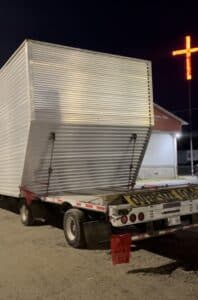This past week, our experience with H&E equipment rental shed light on a recent policy change that carriers need to be aware of. Without prior notice, we discovered that H&E now requires carriers to take on the responsibility of loading and unloading their machinery. We believe it’s crucial for carriers to be informed of this shift in policy, as it poses an increased risk when accepting these loads, whether directly through H&E or via a broker handling one of their shipments. When dealing with H&E, be prepared to shoulder the responsibility of loading and unloading machinery.
Naturally, we questioned the sudden change and its underlying reasons. In response, we informed H&E that, given the additional risk they were transferring to carriers, an extra charge of $150-$200 would be necessary. For carriers, evaluating the added risk is essential in determining whether these types of loads are worth the compensation, especially for newer operators facing slim profit margins and potential impacts on insurance rates and safety scores.
H&E explained that the policy shift was prompted by a surge in insurance claims for damages sustained to carriers’ trailers during the loading and unloading process. While we understand the company’s concern about risk, relying on external transporters inherently involves transit-related risks. Instead of shifting the burden to carriers, we suggest H&E consider investigating and addressing the root causes of trailer damage, potentially saving costs and reducing liability without compromising service quality.
From a carrier’s perspective, this new policy introduces increased liability to our operations. As owner-operators, we are left with two choices: either refusing to haul H&E loads due to heightened risk or adjusting our pricing to offset the increased insurance liability. For H&E, this means either accepting the higher per-load cost, which might still be cost-effective compared to bearing the risk internally, or being patient in finding carriers willing to move their freight under the new conditions.
In conclusion, H&E’s recent policy implementation has significantly narrowed their pool of available carriers, potentially impacting service quality for customers. When negotiating rates, it’s essential to consider the added risk transferred to carriers and adjust rates accordingly. Ultimately, these corporate-level policies affect all parties involved, emphasizing the shared cost of doing business in the industry.








